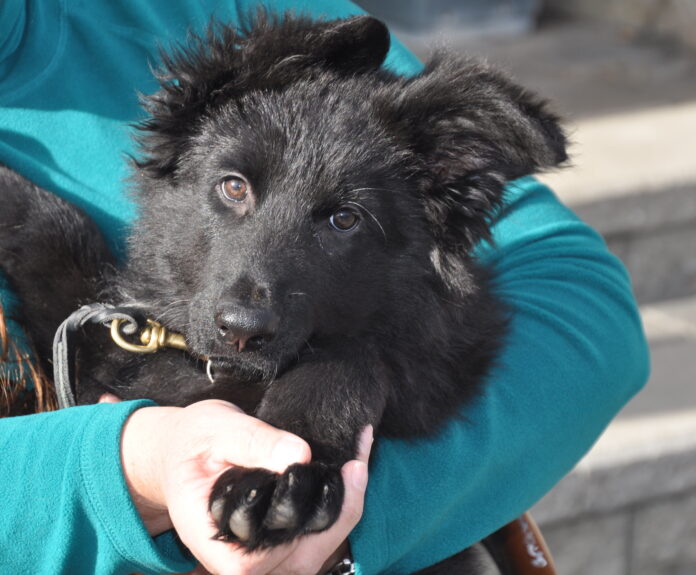
By Fran Jewell
It’s not just obedience. Essential dog training is teaching a dog the essentials of life and how to live in a family. Very few dogs I work with are professional dogs that live in kennels, only to come out to work. Most of my dog clients are all integrated into the family and are treated like family members.
The very basics every dog should have, aside from sit, down, stay and come, include teaching puppies to accept “restraint.” Restraint is holding a puppy snuggly until he relaxes; only put a puppy down when he is not struggling. If you let the puppy down while he is struggling, he learns that if he struggles, he gets what he wants, which is very dangerous for so many reasons. A puppy should be comfortable in a crate or kennel. Why? If a dog is afraid or unwilling to allow someone to restrain them, they end up having very unhappy visits to the vet, or you have a nightmare trying to clip toenails, clean ears, or administering some forms of medication. A dog that is afraid or unwilling to be restrained in a crate or kennel will have a terribly hard emotional time if they are sick or injured and have to be confined during the healing process or at the veterinarian’s for diagnosis or after surgery. Restraint is a life skill that, if taught early, is the key to so much less stress in a dog’s life and yours.
The second incredibly important essential is “yielding.” Yielding is exactly as it sounds. Another term for it could be described as “deferring.” A dog needs to learn to yield to you physically as well as emotionally. Examples would be a dog moving out of your pathway or getting up to move if you want to sit where they are sleeping on the sofa. Waiting for permission to eat or allowing you to take food away is very important. Yielding includes not running between your legs, not jumping on you (respecting your personal space), waiting nicely for permission to go through a door or get out of the car. Yielding can save a dog’s life and can also save your own life. A dog that won’t move out of your way while he is sleeping in a dark hallway could cause you to fall and severely injure both you and the dog. Yielding is a form of respect just like you and I have for other people and their personal space.
How do I teach yielding? If a puppy is sleeping, I gently shuffle my feet under him until he gets up and moves. If he is awake, I can gently walk into him until he turns and walks the other direction. I can even reward those behaviors by tossing a treat away from me. I can put it on command by saying “away” or “move” as the puppy is going away from me.
The hard thing about yielding or restraint is that we don’t usually “teach” it to puppies until there is a problem—someone trips and falls. Some puppies will, by nature, allow restraint and understand yielding. You can even test and select a puppy to see if they naturally understand these important skills. AND, a good breeder can teach many of these things to puppies before they go to their new homes. Many puppies are not naturals. If you wait until you see the problem, it is difficult to go back and undo the problem behaviors the puppy has now made habit. If these things are taught to puppies early in their life, they remember them forever and they are so much happier and you will enjoy them even more.
Look beyond basic obedience to have an anxiety-free, safe and fun relationship that lasts a lifetime! There is more to dog happiness than “sit” and “down!”
Fran Jewell is an IAABC Certified Dog Behavior Consultant, NADOI Certified Instructor and the owner of Positive Puppy Dog Training, LLC in Sun Valley. For more information, visit positivepuppy.com or call 208-578-1565.


